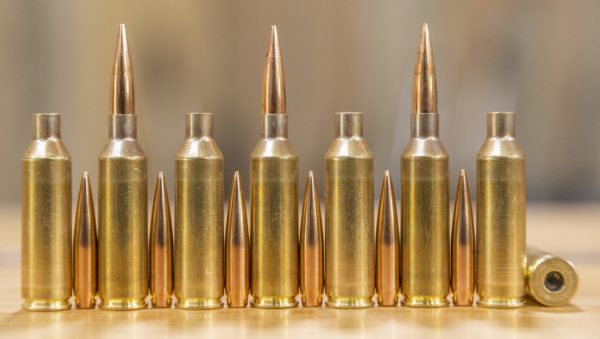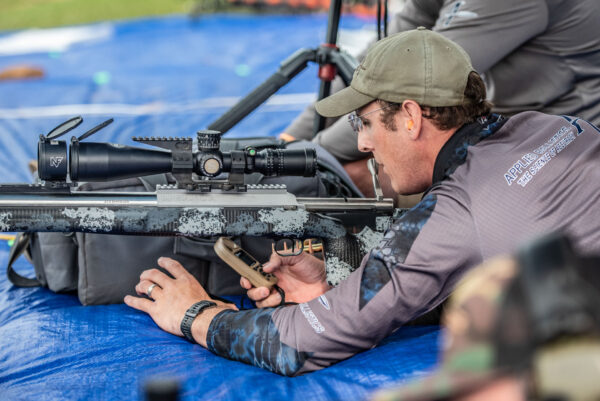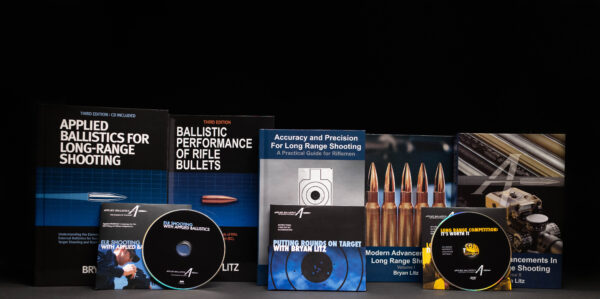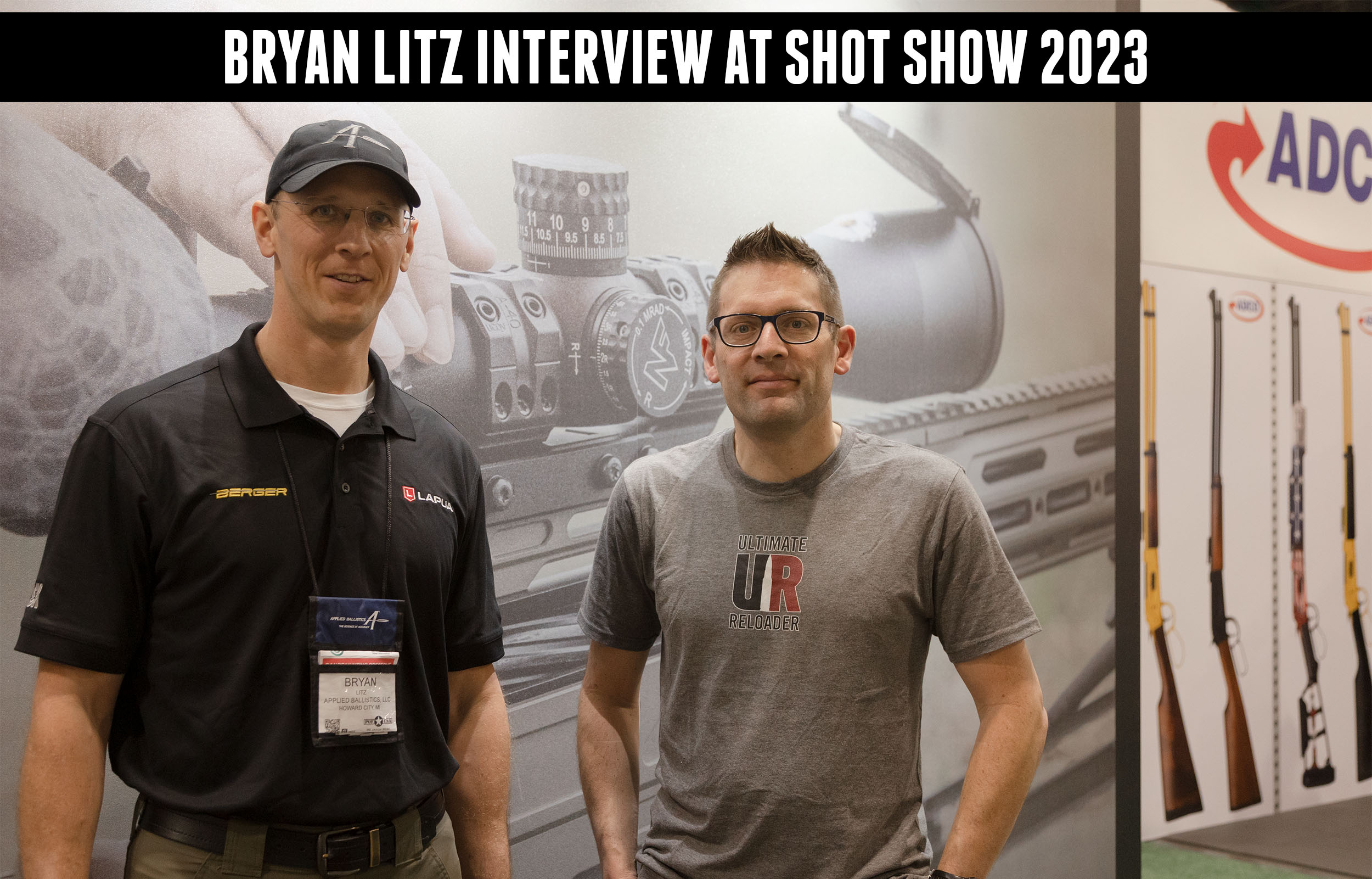It’s easy to say a gun shoots ¾ MOA or that ammo is supposed to perform to a certain level. How do you quantify what that really means? We met with Bryan Litz of Applied Ballistics at the 2023 SHOT Show to discuss.
Disclaimer
Ultimate Reloader LLC / Making with Metal Disclaimer: (by reading this article and/or watching video content you accept these terms). The content on this website (including videos, articles, ammunition reloading data, technical articles, gunsmithing and other information) is for demonstration purposes only. Do not attempt any of the processes or procedures shown or described on this website. All gunsmithing procedures should be carried out by a qualified and licensed gunsmith at their own risk. Do not attempt to repair or modify any firearms based on information on this website. Ultimate Reloader, LLC and Making With Metal can not be held liable for property or personal damage due to viewers/readers of this website performing activities, procedures, techniques, or practices described in whole or part on this website. By accepting these terms, you agree that you alone are solely responsible for your own safety and property as it pertains to activities, procedures, techniques, or practices described in whole or part on this website.
About Applied Ballistics
Bryan Litz, founder of Applied Ballistics and Chief Ballistician for Berger Bullets, is a world renowned expert in long range shooting, data, and ballistics.
From Applied Ballistics:

Applied Ballistics’ mission is to be a complete and unbiased source of external ballistics information for long range shooters. We’re highly active in R&D, constantly testing new claims, products and ideas for potential merit and dispensing with the marketing hype which can make it so difficult for shooters to master the challenging discipline of long range shooting. We believe in the scientific method and promote mastery thru understanding of the fundamentals. Our work is passed on to the shooting community in the form of instructional materials which are easy to understand, and products such as ballistic software which runs on many platforms. If you’re a long range shooter who’s eager to learn about the science of your craft, we’re here for you.
Managing Expectations
Litz explained that most think of rifle precision as a static number. In other words, if your gun shoots ½ a minute, you expect it to shoot ½ minute groups every time. This isn’t accurate and isn’t the nature of dispersion. Instead, Litz explained, you get a variation much like you do in muzzle velocity. “If your average is 3,000, not every shot is 3,000. There’s a variation around that and the same is true of group sizes. If your gun averages ½ a minute, you’re gonna have some groups that are ¾, some groups that are ¼, to average ½ minute. That variation in group size isn’t really captured in the traditional dialogue and as a result, expectations can become really skewed.”
In example, if someone shoots a ¼ min group with their gun, that should not be assumed to be the average. “If you shoot enough groups,” Litz said, “Eventually one of them’s gonna be small.”
Misinformation is everywhere, some intentional and others accidental, especially online. It’s common for people to cherry pick groups, choosing only the best to show. This inspires others to think they have a bad gun or are doing something wrong. Frustration also mounts when a gun shoots well one day and doesn’t shoot as well the next. This can all be alleviated by education and understanding.
How do you determine how good a gun is?
I asked Litz what the best way is to determine what a particular gun/ammunition combination is capable of, as well as how to explain the findings in an unbiased way.
The entire first part of Litz’s latest book, Modern Advancements in Long Range Shooting Vol. III, answers this question in great detail. It covers precision testing and applicable statistics including bell curves, normal distributions and more. Litz suggests anyone interested in the topic read his book for the full explanation.

In short, you can baseline the precision of your rifle with five, 5-shot groups. This will give you a spread, including an average, a smallest and a largest. Resist the urge to cherry pick the best and throw away the rest of the groups as contaminated or messed up in some way. There is a natural statistical variation. Litz says it’s important to know your average, but to also know how much spread there is around that average. Rather than just cite the smallest group, evaluate the potential of your rifle/ammunition combo to shoot within a certain range anytime you shoot it.
The moral of the story? Your groups will naturally vary in size. This is particularly important when you’re handloading and looking to eliminate variables. For example, shooting a 5-shot group with bullets seated to a certain depth and a second 5-shot group with bullets seated to a different depth is not enough to compare them. You may get the smallest or largest group (rather than the average) in the first sample and make incorrect conclusions.
When you test with large sample sizes (dozens of 5-shot groups), you come to fewer conclusions, but they are valid, repeatable and genuine.
Chasing the “Perfect” Load
I’ve personally found some barrels prefer particular projectiles. This didn’t come without great exploration and time invested. This is important to consider, as there are nearly endless combinations of projectiles, powders, charge weights, seating depths, etc. Some cartridges are especially expensive to load for and some are barrel-burners. It’s very possible to burn out a barrel while looking for the best load and have to start all over. I asked Litz if there’s a way to fast track gathering large amounts of the correct data you need to get valid conclusions.

“With the faulty statistical treatment that traditional handloading works in,” Litz explained, “it appears as though there are a lot of things that affect your precision: your seating depth, your primer, your annealing, all that stuff. If you shot one 5-shot group of each of those things, every individual 5-shot group will be different and the erroneous conclusion would be that ‘Well, the smallest group represents the best combination of my load.’ I’m here to tell you that you cannot draw that conclusion from a single 5-shot group. Oftentimes it takes many.” In other words, statistics have largely misled handloaders to think that every little little thing matters, when in reality, they might not matter as much as we think.
In this healthier and more accurate mindset, you are no longer basing your conclusions around the idea there is a single line between amazing and terrible. Litz suggests there is actually a large window in which everything works the same. He also cautions that refining something, like making a ½ minute gun shoot 0.4 MOA at 100 yards on average, you’ll have to fire a significant number of shots. This is when load and caliber considerations come in. If you choose a barrel-burner, it may take more than one barrel to achieve the performance you desire.
The good news is that if you stick with the same thing for a long time, you can start your process with a number of barrels chambered the same way and begin aggregating data. This is especially easy in disciplines like FTR or Palma which dictate certain calibers.
As Litz explains it, managing expectations is a significant part of load development. He doesn’t personally believe all the minor adjustments handloaders make with the same components have a particularly large effect on overall precision. There is something to be said about working with budget versus premier components.
Do Components Matter?
At especially long distances (1,000+ yards), components can have an effect on more consistent results. For example, bullets with a consistent BC will have less vertical shot dispersion. This isn’t able to be controlled by the handloader but comes with component selection.
Litz says this begins with an understanding of what BC SD is and the effect it has. This is very predictable. Some bullets may be incredibly uniform while others may need some additional work. People often ask, “How much does it matter?” “Does it help?” Litz says these questions need to be asked in the right context. “Under what conditions does that matter, and are those conditions present in my shooting application?” He says there are some things benchrest shooters do that definitely benefit them in their sport, but the same items wouldn’t necessarily help a hunter. These are the types of things Litz works to determine in the Applied Ballistics Lab and share in the Science of Accuracy Academy.

It’s important to choose your words carefully. The shooting sports industry as a whole is terrible about things like confusing accuracy and precision. When you’re shooting groups, you’re testing precision, not accuracy. An accuracy test is how well the rifle retains zero. Improper words result in missing tests. Something testing precision while thinking they’re testing accuracy will never actually test accuracy.
It’s also pertinent to realize that similar results are still interesting. If you test two items against each other and they have about the same results, you’ve still learned something you can share with the world.
Conclusion
This discussion has reminded me to consider how things are presented. If I do not have large sample sizes, I have to be sure that is clear. A particular group is one sample, not the average. Small samples and a misunderstanding of statistics have birthed unrealistic expectations. In example, I’m very happy with a ½ MOA gun. Litz confirmed that outside of benchrest, true ½ MOA guns are actually much rarer than the internet would lead you to believe.
Education is key and you do not need a statistics degree to be able to better manage your expectations. It’s incredibly important not to base your major conclusions off an outlier and work on a baseline level of statistics to be able to improve your understanding. Group variation will happen. Expect it.
Get the Gear

Learn more about this topic in Bryan Litz’s latest book, Modern Advancements in Long Range Shooting Vol. III.
Looking for more info?
Check out The Science of Accuracy Academy!
Don’t miss out on Ultimate Reloader updates, make sure you’re subscribed!
Thanks,
Gavin Gear


















































































